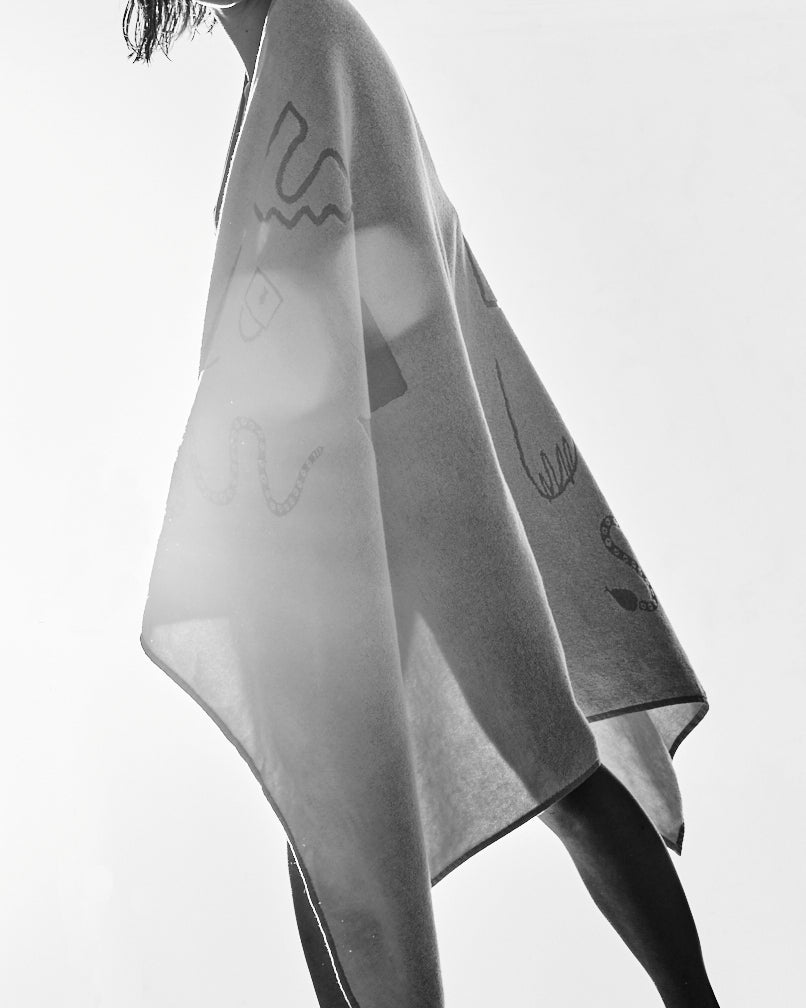
QA with Gone To Sea
While living in New York in 2012, renowned Australian artist Adam Harriden came across an old man taking pictures of tourists on the sidewalk using on a vintage Polaroid camera. Struck by the power of the images captured by such a supposedly outdated contraption, he immediately scoured the East Village’s vintage markets for his own, eventually deciding on a dilapidated 1968 103 Polaroid LAND camera.
After months perfecting his technique - rolling film by hand onto photographic paper on-site - Adam finally ended up with a stunning, painterly photographic product that he now looks forward to sharing with the world.
We sat down with Adam Harriden to talk about his pivoting career, feeling good and finding solace on the sunny coast - Noosa.
Q. What is your background?
I worked in the surf industry as a designer then moved into Advertising then decided I needed saving and found polaroid photography.
Q. What role does the artist have in society?
Well they are one of the last true expression of freedom outlets that can’t be controlled or persuaded, for me I think I create work that allows society a moment to reflect, loose themselves, and forget their troubles.
Q. What’s your process and the formula to taking a successful shot?
Well that’s a secret but light and heat plays a huge role, with polaroid transfers there’s thousands of reasons why something won’t work and only a few that will work.
Q. Who’s is your muse?
My wife is pretty amazing, one she’s got this timeless sense of fashion and style that I’ve never understood but many admire, she seems to juggle our three kids and a job plus help me with my several projects that I have running at any one time, and she never complains, never grows tired and stays beautiful. It’s true.

Q. What memorable response have you had to your work?
I captured an image one morning of a man and boys heading down the beach for a surf only to find out that that was the first time the father and son had surfed together in several years since a divorce, that moment marked a very special precious moment for that father.
Q. Name something you love and why?
Hudson Baby Bourbon, it takes of the edge and lights my fire.
Q. What’s your dream project?
I don’t have a dream project, but I think there’s a huge potential for abrand to adapt this style of imagery, even architecture.
Q. Best advice you’ve been given?
Be grateful for every moment, pretty simple.
Q. When where you first enlightened to polaroid photography?
I was first introduced to the process in New York, my wife actually had her picture taken by a photographer who practiced the technique, I fell in love with the rawness and imperfection of the photo, were in a world where our lives are all about looking as perfect as possible, and technology makes that easy, but my technique is the complete opposite, it messes you up, blurs the lines, distorts reality, and that’s what I love.
Q. Why should someone own a piece of your work?
Well the reality is that the film is no longer made and film is limited around the world. One day very soon I won’t even be able to take a polaroid picture in this format to transfer onto paper. I also say to collectors that you’ll always walk into a gallery and see many paintings, you’ll also see many traditional photographs and sculptures, but the one piece or style of work that you’ll rarely see yet stands out the most is one of my Polaroid photographs, they are unique and they’ll find you.




